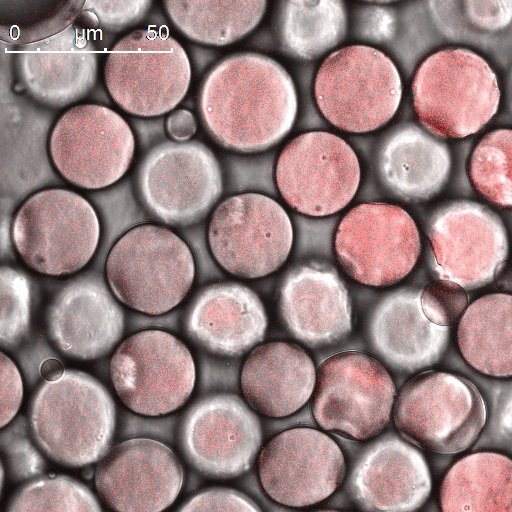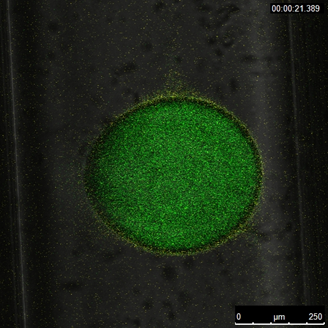


Projects: Supramolecular assembly of polymer nanoparticles into functional nanoscale materials
Formation of Stable Nanocarriers by in situ Ion Pairing in Block-Copolymer-Directed Rapid Precipitation
MRI active Nanoparticles as Contrast Agents for Tumor Detection
Nanoparticles for Multimodal Imaging
Multifunctional Nanoparticle Fabrication for Efficient Therapeutic and Diagnostic Delivery
Multifunctional nanoparticles for biomedical imaging applications
Gel microparticles. Micron-sized hydrogel particles are being developed in collaboration with the Stone lab at Princeton University and the Sinko lab at Rutgers University. These particles are specifically designed to target the lungs via the venous flow filtration pathway. Within the gel matrix of these particles various diagnositic and therapeutic materials can be encapsulated and controllably released in the lungs.
Projects: Microfluidic fabrication of gel microparticles for lung cancer drug delivery
Emulsions. Stabilization of emulsions, foams and thin films requires that the interfaces be kept far enough apart to prevent rupture induced by long-range, London-van der Waals attractions. We study the transport of dispersants to and along interfaces through the synthesis of novel surfactants and emulsifiers, the characteristics of dispersants that improve emulsion stability using microfluidics, and the use of emulsions as scaffolds for creating drug carriers and other microparticles.
Projects: Dispersant kinetics at the microscale
Microcapsule formulation for controlled release
